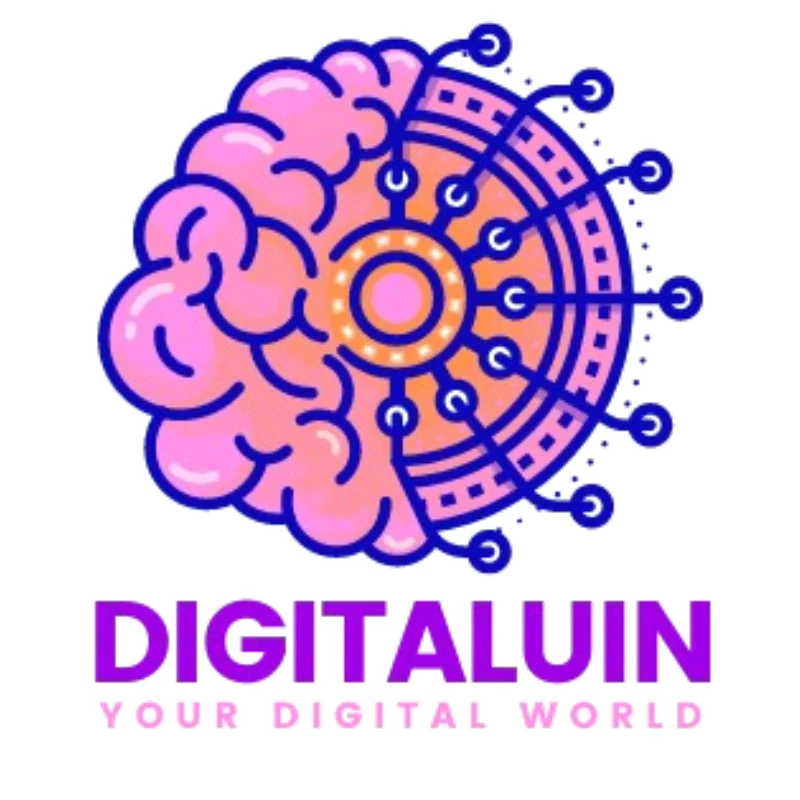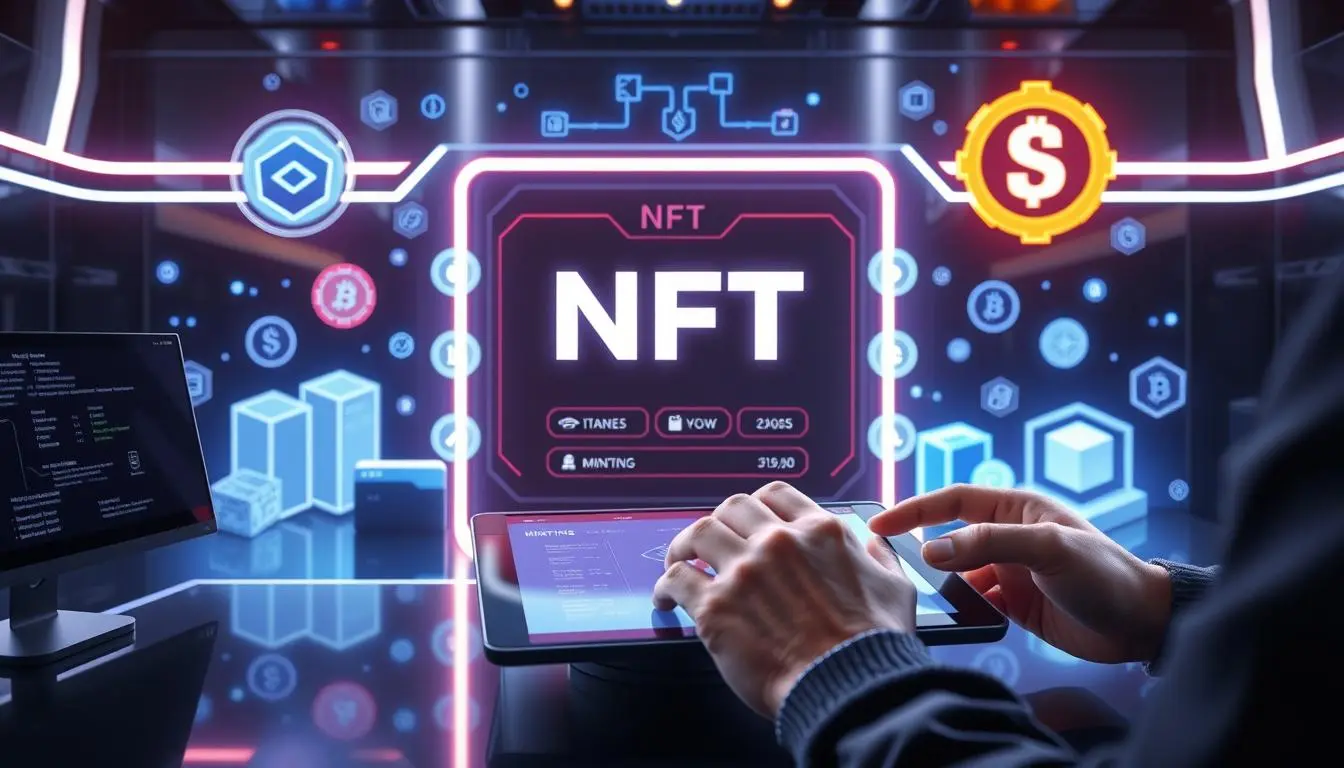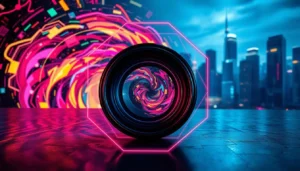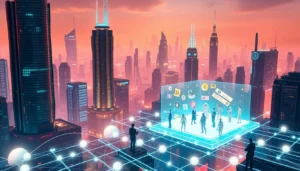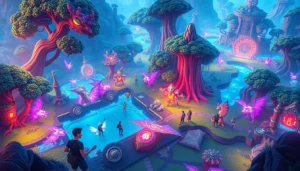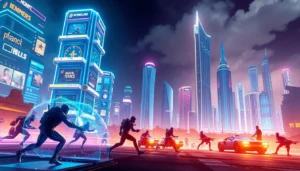Understanding NFT Minting: A Beginner’s Guide
Imagine owning a unique digital item, like art or a collectible, in a secure way. Non-fungible token minting lets you do this by adding digital files to the blockchain.

This method not only proves your digital assets are real. It also helps creators make money from their work. As you learn about digital ownership, you’ll see how important this tech is and its many uses.
Table of Contents
What Are NFTs and Why Do They Matter
NFTs represent a groundbreaking evolution in the digital landscape, merging creativity with blockchain innovation. They show us a different way to think about owning and valuing things. NFTs, or Non-Fungible Tokens, are unique digital items that can be owned, collected, or sold. They represent a new way of owning things online.
Defining Non-Fungible Tokens
Unlike traditional assets, NFTs are one-of-a-kind, ensuring authenticity and exclusivity in the digital realm. This is because they use blockchain technology. Key features of NFTs include their uniqueness, scarcity, and the ability to represent a wide range of digital content, such as art, music, and even virtual real estate.
The Value Proposition of NFTs
NFTs leverage blockchain’s unalterable ledger to establish indisputable ownership and authenticity for digital assets, setting them apart from conventional files. This opens up new ways for creators to make money and for collectors to own and trade unique digital items. Some of the main benefits of NFTs include:
- Proof of ownership and authenticity
- New revenue streams for creators
- A platform for exclusive digital artistry and rare blockchain-based collectibles
Current State of the NFT Market
The NFT market has grown a lot, with new platforms popping up to help create, sell, and trade NFTs. The market’s growth is fueled by innovation, with new uses and applications being found all the time. NFTs are reshaping digital ownership, proving to be more than a passing phase; they’re a transformative shift in value perception.
Exploring NFTs is exciting, and understanding their tech, market trends, and opportunities is key. Whether you’re an artist, a collector, or just curious about the future of digital ownership, NFTs offer a fascinating and fast-changing world to discover.
The Fundamentals of NFT Minting
Entering the NFT space begins with mastering minting, transforming digital files into certified blockchain assets. This uses blockchain tech for safety and to prove ownership.
What Is NFT Minting?
NFT minting creates a non-fungible token, showing you own a special digital item. This could be art, music, or collectibles. You upload your digital item to a blockchain, where it’s checked and stored.
NFT minting turns your digital file into something unique. NFTs function as tradable digital assets, bought and sold across global marketplaces.
How Blockchain Technology Supports NFTs
Blockchain tech is key to NFT minting. Acting as a tamper-proof digital record, the blockchain securely logs every NFT’s provenance and ownership trail. This tech makes NFTs unique and valuable.
It ensures each NFT is one of a kind and can’t be copied. Blockchain’s inherent security and transparency enhance the trustworthiness of NFTs, attracting both collectors and investors.
Different Blockchain Networks for NFTs
Many blockchain networks support NFT minting, each with its own benefits. Ethereum is well-known for its strong NFT ecosystem. With its low-cost transactions and rapid processing, Binance Smart Chain has become a go-to network for NFT artists seeking affordability without sacrificing speed.
Flow and Tezos are also growing in popularity. They’re known for being energy-efficient and having big communities. When choosing a blockchain for NFTs, prioritize affordability, scalability, and an active developer community.
Preparing Your Digital Assets for Minting
Preparing your digital files correctly is the foundation of a successful NFT launch. You must check if your files are the right size and format. Also, make sure you have all the metadata needed.
Acceptable File Formats and Sizes
Leading NFT marketplaces accommodate widely used media formats, such as JPEGs for images, PNGs for transparency, GIFs for animations, and MP4s for videos, streamlining the upload process. But it’s important to see what each platform requires. Also, check the size limits for your files.
| File Type | Recommended Format | Maximum Size |
|---|---|---|
| Images | JPEG, PNG | 30MB |
| Videos | MP4 | 100MB |
| 3D Models | GLB | 50MB |

Creating Metadata for Your NFT
Metadata adds extra details to your NFT, like its name and description. Good metadata helps people find and value your NFT. Make sure it’s detailed and includes the right keywords.
Ensuring Your Art Is Mint-Ready
Before minting, check if your digital asset looks great and works well. Look out for any technical problems. Before committing to the mainnet, experimenting on a testnet ensures a smooth and error-free NFT launch.
Setting Up Your Crypto Wallet
To start with NFT art minting, you need a crypto wallet. A crypto wallet functions as a secure digital vault for managing, transferring, and receiving blockchain-based currencies. These are key for using NFT minting platforms.
Popular Wallet Options for NFT Creators
Many NFT creators use MetaMask and Coinbase Smart Wallet. User-friendly wallets combine accessibility with high-level security for hassle-free asset management.
When picking a wallet, think about its compatibility with your NFT platform. Evaluate both user-friendliness and security features when selecting tools for your NFT journey.
Securing Your Wallet
Keeping your crypto wallet safe is very important. Start by securing your account with a complex password and enabling multi-factor authentication.
Safeguard your wallet by storing its recovery phrase or private key in a secure, offline location. Keep it somewhere very safe.
Funding Your Wallet with Cryptocurrency
Funding your digital wallet with crypto is essential to cover the costs associated with NFT creation. The type needed might depend on the platform you’re using.
You can buy cryptocurrency on exchanges like Coinbase or Binance. Then, move it to your wallet.
Choosing the Right NFT Minting Platform
Selecting an NFT minting platform is a pivotal choice that influences visibility, fees, and long-term success. The NFT market has many platforms, each with its own features. Finding a platform tailored to your creative and financial goals is essential for NFT success.
Overview of Major NFT Marketplaces
Many major NFT marketplaces have popped up. OpenSea is huge and popular, with lots of NFTs to choose from. Rarible simplifies NFT creation and sales, offering a streamlined experience for artists.
SuperRare is known for its top-notch digital art. Mintable offers a simple minting process. Each marketplace boasts unique tools and features designed to enhance the NFT experience.
Platform Fees and Requirements
Understanding marketplace policies and associated costs is vital before listing your NFT. Most charge a minting fee, but prices vary. OpenSea has a gas fee, while Rarible doesn’t charge upfront but takes a service fee on sales.
Some platforms have specific rules for what can be minted. It’s important to check these before choosing.
Marketplace-Specific Features
Each marketplace has its own special features. Advanced platforms provide perks like personalized galleries and automated royalty management. Others focus on certain types of NFTs, like art or collectibles.
Here’s a quick look at some key features of major platforms:
| Platform | Fees | Key Features |
|---|---|---|
| OpenSea | Gas fee for minting | Large user base, wide range of NFTs |
| Rarible | Service fee on sales | Easy minting process, customizable storefronts |
| SuperRare | Commission on sales | Focus on high-quality digital art, limited edition NFTs |
By looking at these details, you can pick the best NFT minting platform for you. This will help you succeed in the NFT world.
The Complete NFT Minting Process
Minting an NFT is easy once you know the steps. It involves several stages that turn your digital assets into unique tokens on a blockchain. You need to create an account, upload your asset, set its properties, and complete the minting transaction.
Creating an Account on Your Chosen Platform
Begin by registering an account on your preferred NFT platform to start minting. Sites like OpenSea, Rarible, and Mintable make it easy to start. Strengthen account security with a robust password and enable two-factor authentication for added protection.
Uploading Your Digital Asset
After setting up your account, upload your digital asset. This could be art, music, or any digital content. Verify that your artwork meets the platform’s technical specifications for format and dimensions. Most platforms support JPEG, PNG, GIF, and MP4 files.
Setting Properties and Unlockable Content
Next, set your NFT’s properties. Define your NFT with a compelling title, detailed description, and customizable traits; exclusive content can add extra allure. This could be exclusive website access or a physical item.
Finalizing the Minting Transaction
The final stage involves executing the minting transaction to officially register your NFT on the blockchain. Confirm your NFT details and pay any gas fees.
Gas fees compensate miners or validators for processing and securing blockchain transactions. Minting expenses fluctuate depending on network demand and the platform’s pricing model. After blockchain confirmation, your NFT becomes tradable and publicly verifiable.
By following these steps, you can successfully mint your NFT and join the NFT community.

Understanding Gas Fees and Minting Costs
To effectively navigate the NFT minting process, grasping gas fees is key. Gas fees constitute a significant portion of the investment required to mint an NFT. Their fluctuation can greatly affect your expenses.
What Are Gas Fees?
Gas fees represent the computational effort required to validate and record NFT transactions on the blockchain. These costs vary dynamically, influenced by network traffic and the intricacy of the transaction.
Key factors influencing gas fees include:
- Network congestion leads to higher gas fees as transaction demand increases.
- Transaction complexity: More complex transactions require more computational power, increasing gas fees.
- Blockchain selection impacts costs; each network has its own fee model for NFT transactions.
Strategies to Minimize Minting Costs
To cut down on NFT minting costs, try these strategies:
- Choose the right blockchain: Some blockchains, like Solana or Polygon, offer lower gas fees compared to Ethereum.
- Minting during low-traffic periods can significantly reduce gas fee expenses.
- By processing multiple NFTs in one consolidated transaction, creators minimize repetitive network operations, dramatically lowering costs without compromising processing times.
Alternative Minting Methods: Lazy Minting Explained
Lazy minting defers gas fees until the NFT is sold, easing upfront financial barriers for creators. Instead, the buyer pays the gas fee when they buy the NFT. This method is good for creators wanting to lower initial costs.
By understanding gas fees and using strategies to cut minting costs, you can make your NFT creation process more efficient and cheaper.
Creating NFT Collections and Series
Making an NFT collection is more than just creating many NFTs. NFT success hinges on storytelling, audience engagement, and elevating the perceived value of your digital art.
Planning Your NFT Collection Strategy
To make a great NFT collection, you must plan well. First, decide on a theme, style, or story that connects your NFTs. Consider both the size of your collection and its intended audience when planning your NFT strategy. A good plan can help you shine in the NFT world.
Think about making some NFTs rarer than others. This could make them more valuable. Also, think about how your collection will look on NFT marketplaces.
Using NFT Generators for Collections
NFT generators are great for making collections. They let you create many unique NFTs with different layers or attributes. This way, you can make a big collection with unique pieces that look good together.
Tools like Hashlips and Art Blocks are popular for this. They offer features like layer blending and rarity settings. This makes it easier to make interesting and varied collections.
Setting Up Smart Contracts for Royalties
When you make an NFT collection, think about how you’ll handle royalties. Smart contracts can help. They can make sure you get paid when your NFTs are sold or traded.
| Platform | Royalty Rate | Smart Contract Support |
|---|---|---|
| OpenSea | Up to 10% | Yes |
| Rarible | Up to 15% | Yes |
| SuperRare | Up to 15% | Yes |
Smart contracts enable automatic royalty payments, ensuring ongoing earnings from secondary sales even when it’s sold or traded again.

Marketing and Selling Your Newly Minted NFTs
Once your NFT is live, strategic promotion and sales tactics are crucial for maximizing exposure. The NFT market is getting crowded, so you need a smart plan. This includes setting the right price, engaging with your community, and promoting your work.
Setting the Right Price
Getting the price right is key. If it’s too high, buyers might not come. Pricing too low may undervalue your work research comparable to NFTs, to set a competitive rate.
Think about the artist’s fame, how unique your digital art is, and what’s happening in the market. Dynamic pricing strategies can work too. Start with a lower price to get people interested, then adjust as demand grows.
Building a Collector Community
Building an active, loyal following around your NFT projects not only boosts visibility but also creates a self-sustaining ecosystem of collectors and advocates. Talk to possible collectors on forums, Discord, and social media. Share the inspiration behind your art and involve your community in the creative journey for deeper engagement.
Building a community means making a group of fans who will support you. Keep them updated, share behind-the-scenes stuff, and have interactive sessions. Cultivating meaningful connections with your audience fosters loyalty and long-term support.
Leveraging Social Media for NFT Promotion
Social media is great for promoting your NFTs. Use Twitter, Instagram, and TikTok to reach lots of people. Post high-quality pictures of your NFTs and use hashtags to get seen more.
Work with influencers and other artists to get more eyes on your work. Think about running ads on these platforms to get even more visibility.
By pricing well, engaging with your community, and using social media, you can sell your NFTs successfully.
Conclusion: Your Journey into the NFT Space
Now you know how to mint NFTs. You’re ready to dive into the world of digital art and collectibles. You’ve learned about NFTs, prepared your digital assets, and picked the best minting platform.
Keep being creative and engaging with the community. Leading marketplaces like OpenSea and Rarible offer ideal platforms to showcase and monetize your digital collectibles.
If you’re into art, collecting, or just love NFTs, there’s so much to explore. Keep learning, stay creative, and have fun in this new world.
